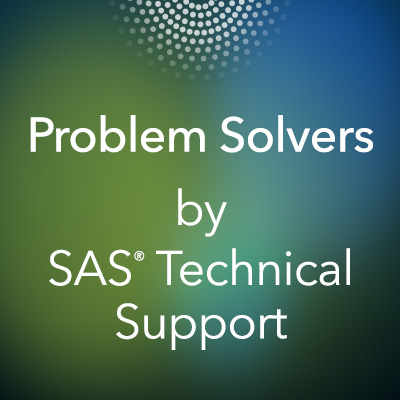Making peace with storytelling and analytics :
A
number of years ago I was driving home to Alabama for the holidays.
Typical of the season the driving was not easy. It was getting dark
early and the traffic was fairly heavy. I had the radio on to pass the
time. A talk show was on and the topic was Southern storytelling. The
host was interviewing local storytellers. As you would expect, it was
entertaining, but about how to be a storyteller – not just stories.
The
host asked one of the guests if they embellish stories. The answer was
not unexpected, “Yes, of course.” I was chuckling to myself likely
nodding my head with what I expected to hear and unprepared for the
rest of the answer. “Of course I embellish, that is the only way to
tell the truth.” Unfortunately, I did not catch the name of the talker
to give proper attribution, because this sage advice needs attribution.
Or perhaps this was a secret that all storytellers know, but few
reveal.
As
she continued with this strange response, I began to see the wisdom of
the conflicting ideas. How can embellishing help you tell the truth?
The storyteller explained that to properly tell a story, you have to
set the mood, the feeling of the event and the emotions, the sights,
the smells – everything. The listener cannot truly get those senses
because they obviously were not there. Embellishment replaces the senses
and gives the listener a more accurate description by increasing the
experience. I experienced one of those moments of universal truth.
I have heard the advice that to explain analytics requires you to tell stories with numbers.
Frankly,
I have never felt comfortable with the advice. It seemed trite and
incomplete. It is not unusual to hear advice like this, most of the
advice you read on presenting analytics
seems to be good, but flimsy without a core or foundation we normally
have for other aspects of analytics. Similarly, this storytelling with
numbers advice needed a core reasoning for me to embrace it.
Perhaps
I was conflicted with my recognition of the role of the embellishment
of storytelling. Perhaps because I have seen poor work presented by
expounding on anecdotal information accurately presenting one
situation, but missing the main points of the population. Or worse
oversimplifying a complex system with a simple model and clean (but
incomplete) story. The world of analytics and the world of storytelling
seemed to conflict.
Reading about storytelling from one of my heroes helped me with this conflict. And this too takes me back to Alabama. Edward O. Wilson,
like me, spent years of his childhood in and around Mobile, Alabama.
With wetlands, deltas, rivers, ocean, bogs, plains, pine trees, Spanish
moss, heat and humidity and lots of bugs the place is an environmental
wonderland. Me? I just enjoyed it. E. O. Wilson? He turned the
experience into a passion and became recognized as the world’s greatest
expert on ants, a career teaching at Harvard and world fame. As he
described it, “Every kid has a bug period … I never grew out of mine.”
His work with ants involved the study of their fascinating social
systems and his thoughts on social systems led to thoughts on
storytelling.
“The narrative genius of Homo sapiens
is an accommodation to the inherent inability of the three pounds of
our sensory system and brain to process more than a minute fraction of
the information the environment pours into them. In order to keep the
organism alive, that fraction must be intensely and accurately
selective. The stories we tell ourselves and others are our survival
manuals.” American Educator, Spring 2002
In
short, stories are what we remember, not lists, not facts, not dates
from high school history class – stories. This fits well with what I
have grown to believe about explaining analytics, that it is not a task
evolved around presenting what we have found, but presenting the story
(the data) in a way that the audience discovers for themselves. The
results then become their story. We accomplish this by being
“intensely and accurately selective” in what we identify and point out
in this new shared story. A shared story that is not just
discovered by us but with our help discovered by our audience as well.
Self-discovery leads to a finding being internalized and remembered in
the same way that the Southern storyteller’s embellishment puts the
mood, the environment, the sounds and the smells in the audience’s head.
So
what about embellishment? Does that lesson have a role for us?
Obviously that is not what we want to do with analytics. At its heart,
analytics is strictly factual. I have come to realize that the
replacement that serves the role of the embellishment that gives the
audience a more accurate description is the visualization. One more
graph, as close to perfect and complete and universally descriptive of
the problem as possible is our embellishment. If this embellishment is
used as the main takeaway from a presentation, then it tells the story
completely.
Epoch Research Institute Links:
Email us: info@epoch.co.in
SAS Training & Placement
Programs with Internship: Epoch Research Institute India Largest and Oldest
#SASTraining Institute (#epochsastraining)
EPOCH RESEARCH INSTITUTE OFFERS:
Authorized SAS TRAINING | SAS
CERTIFICATION | SOFTWARE PURCHASE | BUINESS CONSULTING | TECHNICAL SUPPORT ON
SAS || SAS STAFFING SOLUTION
Label:
#SASELEARNING,#SASELEARNING,#SASONLINETRAINING,
#SASONLINETRAININGFORBEGINNERS,#LEARNSASPROGRAMMINGONLINE,
#SASCLINICALONLINETRAINING,#SASBASEONLINETRAINING
#BIGDATASASTRAININGEPOCH,#SASBIGDATATRAINING
#EPOCHRESEARCHINSTITUTE, #SASTRAINING, EPOCH SAS FEEDBACK,


No comments:
Post a Comment